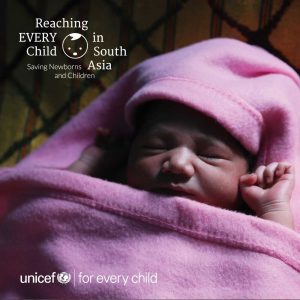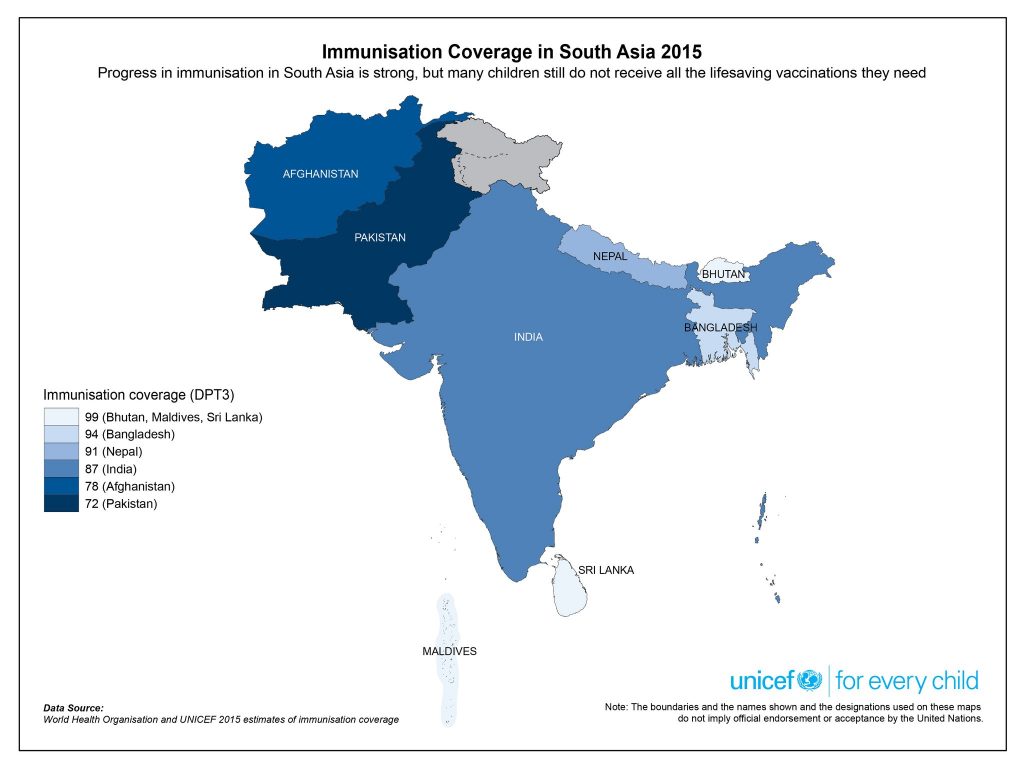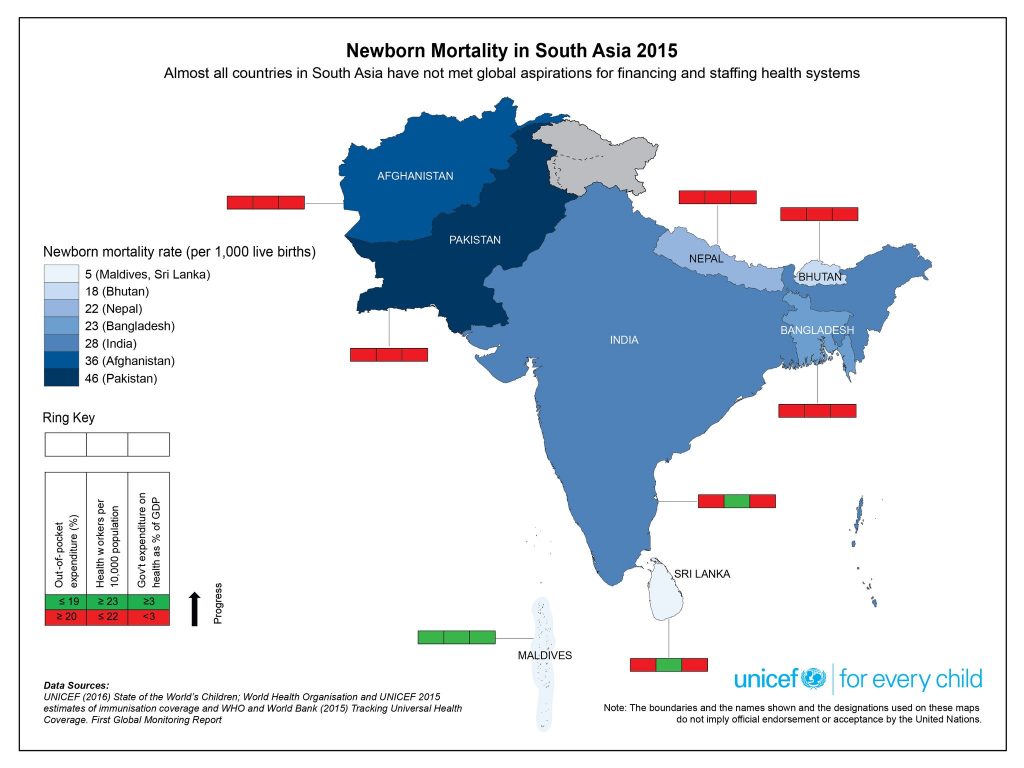
The UNICEF South Asia Region has the highest number of newborn deaths. In 2015, the global number of newborn deaths was 2.7 million. South Asia, alone, had more than 1 million newborn deaths in the same year with India (696,000), Pakistan (245,000) and Bangladesh (74,000) being the highest burden countries.
The South Asia Health Atlas provides evidence on the urgency to reach the most disadvantaged children in the Region. Using the relatively under-used, innovative technique of ring mapping, the Atlas shows deprivations and underlying contributing factors of immunisation and newborn deaths across and within countries in the region. UNICEF in South Asia is releasing the new South Asia Health Atlas to highlight the importance of two major health problems: tackling newborn deaths and ensuring children are fully immunised in the region.
Click the image to view the Atlas

 The Atlas demonstrates clearly that newborn deaths tend to be among the poorest and most disadvantaged populations in the region and huge inequities in critical newborn health interventions exist across South Asia. Clear data on the inequities experienced by mothers and children is an essential tool in our work, including for policy setting, strategic planning and working with communities.
The Atlas demonstrates clearly that newborn deaths tend to be among the poorest and most disadvantaged populations in the region and huge inequities in critical newborn health interventions exist across South Asia. Clear data on the inequities experienced by mothers and children is an essential tool in our work, including for policy setting, strategic planning and working with communities.
- In India, only 20% of women had a skilled attendant during their last stage of birth in Nagaland compared to almost all women in Kerala (99%), and Tamil Nadu (99%).
- In Afghanistan, the wealthiest women are about five times as likely to have a skilled attendant at birth as the poorest women.
- In Nepal, wealthiest women are twice as likely to receive antenatal care (ANC) than the poorest women.
- Almost all births in Sri Lanka (99%) are attended by a skilled attendant (a medically trained provider) compared to only 42 percent in Bangladesh.
Resources
- See the Launch Discussion
- See the press release by UNICEF Regional Office for South Asia
- Download a Key Messages toolkit by UNICEF Regional Office for South Asia
- See an advocacy video prepared by UNICEF Regional Office for South Asia: #SaveNewborns #ForEveryChild